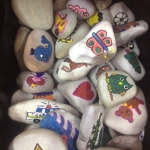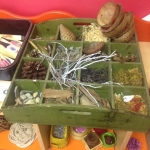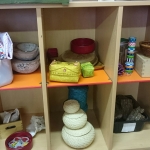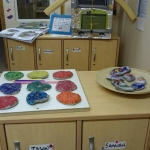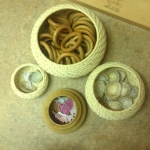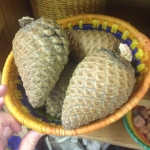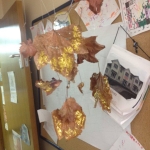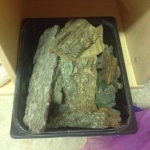Happy Faces, Askeaton, consisting of crèche, Montessori and after school club thoroughly believes in open-ended materials and provides a wide range for the children to explore. These open-ended materials are located in interest areas to enhance different areas of development and learning. Open-ended natural materials allow you and the children to bring the outdoors indoors.
What are the benefits?
Open-ended materials can help connect play to the different weekly/monthly themes/topics that may arise. By providing additional materials and accessories to the open-ended materials in the existing interest areas, children can engage in many different types of play such as small world play, construction play, socio-dramatic play and creative play/arts and crafts. It allows children to reflect on their play and schemas in which they have come up with and see what worked for them and what failed. These materials also encourage the children to engage in decision making as it provides opportunity for many different learning experiences. (Video- https://vimeo.com/ncca/review/54050110/0b2e8aec8e).
Aistear states that open-ended materials promote creativity, exploration and imagination.
(Aistear, Learning and Developing through Play – http://www.ncca.biz/Aistear/pdfs/Guidelines_ENG/Play_ENG.pdf ).
Using open-ended materials encourages imagination, creativity and problem-solving skills so play can be richer and more complex. This kind of play ensures rich learning and fun and gives children the freedom to choose and create, developing confidence and competence.
(Aistear/Síolta Practice Guide – Creating and Using the Learning Environment – http://ncca.ie/en/Practice-Guide/Creating-And-Using-The-Learning-Environment/Resources-for-Sharing/Open-ended-materials.pdf)
Adult’s Role.
The environment influences how and what children play. Well resourced, well planned and predictable indoor and outdoor spaces help children to see the opportunities that are available for play. There are two roles for the adult in preparing this environment: organising it and resourcing it.
While all children have the potential to play, some may require extra support from the adult in order to benefit from playing.
(Aistear, Learning and Developing through Play, pg. 56, 59).
Relating to Aistear’s statement, some children may not be familiar with playing, using such natural, open-ended materials, therefore, the adults may need to step in and model how to play by joining in with the children. It can be very beneficial to children who experience difficulty to encourage co-operative play also as it will help them get involved with peers which can result in learning from each other.
Examples of open-ended materials.
Balls, Bamboo, Bark, Baskets, Blankets/throws, Blocks, Bottle caps, Boxes (variety of sizes), Buckets, Buttons, Chains, Chalk, Crates, Cushions, Dress-up props, Egg cartons (un-used), Fabric (curtains, shawls), Feathers, Flower pots, Food containers, Funnels, Guttering, Hair curlers, Hoses, Jam-jar lids, Keys, Leaves, Lentils, Logs, Leather purses, Magazines, Moss, Newspapers, Nuts and bolts, Pallets, Paper, Paper plates, Pasta, Pebbles, Pegs, Pine cones, Pipes, Planks, Plastic bottles, Ribbons, Rope, Sand and gravel, Saucepans, Shells, Spools and reels, Sticky tape, Stones, Straws, String, Trays, Tree stumps, Tubes, Twigs, Tyres, Wall-paper, Water, Wind chimes, Wooden utensils.
(Aistear/Síolta Practice Guide – Creating and Using the Learning Environment – http://ncca.ie/en/Practice-Guide/Creating-And-Using-The-Learning-Environment/Resources-for-Sharing/Open-ended-materials.pdf)
Below are some examples that Happy Faces provide for the children and some ideas of what you can do with them.


